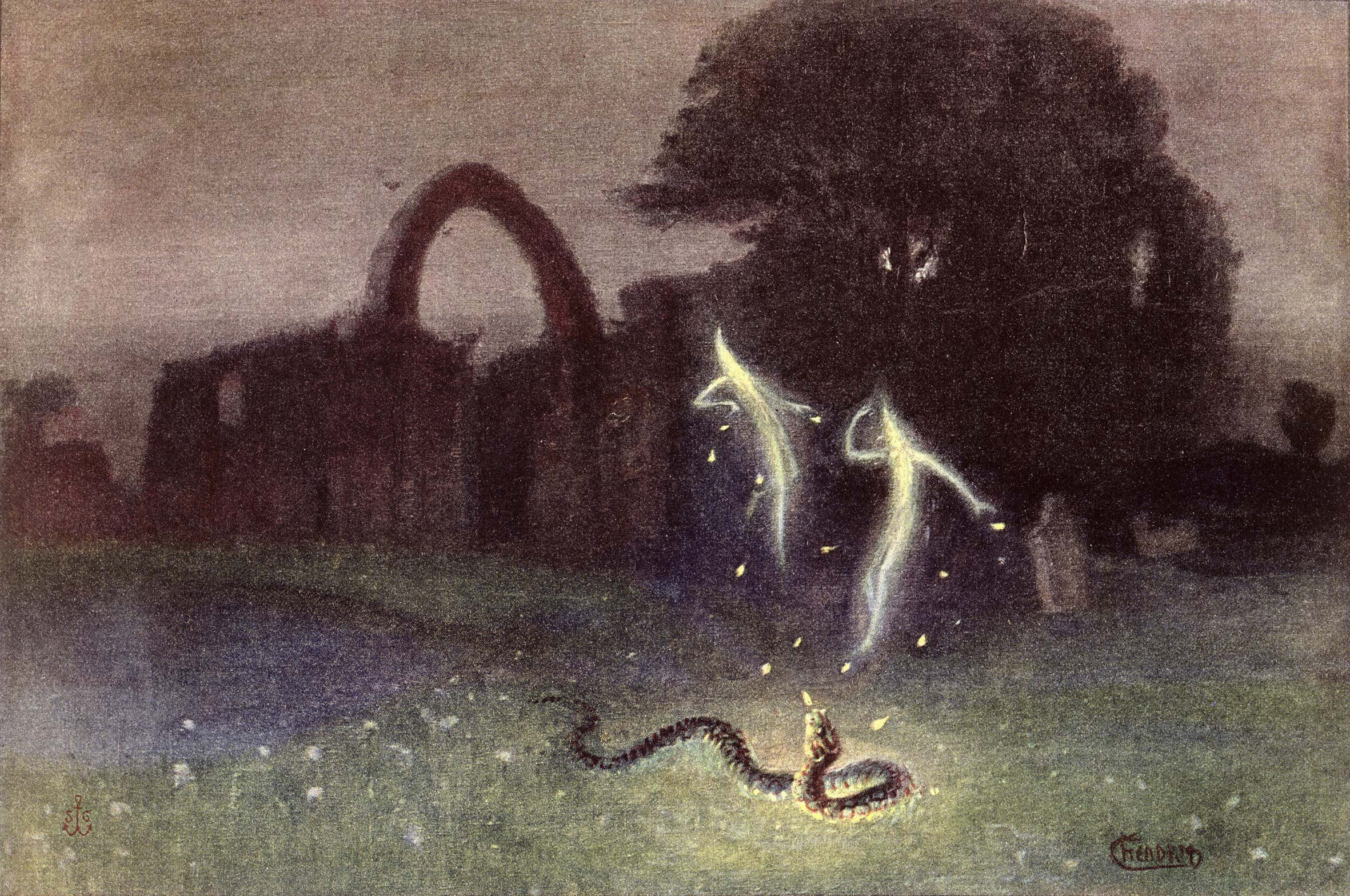 | |
| "Wil-o-the-Wisp" by Hermann Hendrich (1854-1931) |
Halloo my dearies! Today's post is the second in what will be an ongoing series of articles appearing now and again called "Fairies 101." These articles will tell the story of various kinds of fairy folk. I hope you enjoy.
The Will o' the Wisp is unpredictable and can lead people
astray--but, according to other stories, it can also lead travelers to fortune
or to their fate. The Will o' the Wisp is known throughout Europe by a variety
of names, including Herwisch and Irrwisch in Germany, Ellylldan
and Pwca in Wales, lyktgubbe in Sweden, teine biorach in
Ireland, and Kitty-Candlestick, Hobby-Lantern, ignis fatuus,
Jenny-Burnt-Tale, Jack-o'-Lantern, and many other names in England.
According to the folklore scholar Katharine Briggs, in her Encyclopedia
of Fairies, the Will o' the Wisp is primarily a trickster that delights in
leading travelers at night into dangerous ground, such as bogs or marshes. In
the stories she cites, the Will o' the Wisp was once a man who was rejected by
both Heaven and Hell, and so had to roam the earth forever with only a dim
light to guide him and keep him warm. When the Will o' the Wisp appears in a
graveyard it is believed to predict a death. Briggs points out, though, that
Puck, or Robin Goodfellow, could act as the Will o' the Wisp when he chose,
specifically in order to trick and mislead travelers.
Cassandra Eason, in A Complete Guide to Faeries &
Magical Beings, and Edain McCoy, in A Witch's Guide to Faery Folk,
have a different understanding of the Will o' the Wisp. They say that these
fairies can help humans as well as hurt them, as the Will o' the Wisp does in
Disney's movie Brave. McCoy and Eason both suggest that the Jack-o'-Lantern,
so much in evidence at Hallowe'en, is based on the Will o' the Wisp's ability
to protect against the evil spirits that mislead travelers.
Scientists have long claimed that the Will o' the Wisp
phenomenon is caused by the igniting of swamp gas. According to the swamp gas
theory, gases such as methane and phosphene, which are produced by rotting
marshland vegetation, spontaneously combust, creating a flame. According to
Eason, “[R]esearch undertaken in 1980 by Dr. Alan Mills of Leicester
University's Department of Geology was unable to reproduce … a will o' the wisp
type flame... Nor could the researcher discover any natural source of
ignition.” It has also been pointed out that many sightings of the Will o' the
Wisp are not in or around marshlands. This theory also fails to explain the
interactive nature of this fairy, or the reports of it soaring and swooping, or
moving against the wind.
There are many different variations of the Will o' the Wisp
tale. For more on the Will o' the Wisp check the above books as well as the
online folklore collection Folklore and Mythology Electronic Texts of The
University of Pittsburgh.
Be on the lookout if you're even out at night in a lonely place. The Will o' the Wisp might appear either to help or hinder your journey.
Parts of this post first appeared as a National Fairies Examiner article.

No comments:
Post a Comment
Note: Only a member of this blog may post a comment.